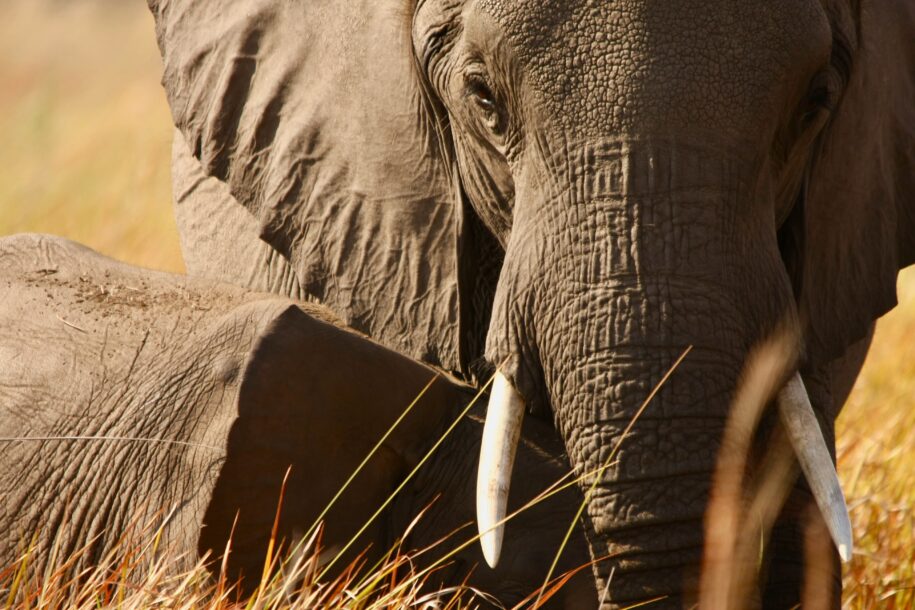A Fresh Perspective on Kruger’s Elephant Population
Full Credit Dr. Sam Ferreira. Specialist Scientist: Large Mammals
Unpacking the Research
How many elephants are too many? This question has long been a topic of debate among conservationists. Kruger National Park, home to one of Africa’s largest elephant populations, has witnessed significant growth in numbers—from just a handful in the early 1900s to over 31,000 by 2020. Recent research, utilizing advanced aerial surveys and refined statistical models, provides a clearer picture of this expansion, showing an annual growth rate of approximately 5.3% since 2013.
Counting elephants, however, is more complex than it seems. Traditional aerial surveys often resulted in undercounts due to human error and the challenge of spotting elephants from above. The new methodology, which integrates conventional counting with statistical adjustments, led to a 2020 estimate of 31,324 elephants, with a margin of error spanning a few thousand.
While this growth represents a conservation success, it also brings challenges. A rising elephant population strains Kruger’s trees, water sources, and other wildlife. However, the real issue isn’t just the number of elephants—it’s their movement patterns, duration of stay in particular areas, and overall impact on the ecosystem.
Elephants as Ecosystem Architects
Elephants play a crucial role in shaping landscapes. For thousands of years, they have influenced ecosystems by toppling trees, dispersing seeds, and altering vegetation patterns. However, human activities have disrupted these natural cycles, fragmenting habitats and modifying migration routes.
By the 20th century, conservation efforts successfully restored elephants to Kruger. Yet, managing their impact remains an ongoing challenge. While elephants contribute to biodiversity—clearing dense vegetation, enhancing plant dispersion, and even bolstering climate resilience—they can also cause unintended damage, such as excessive deforestation in vulnerable areas.
Despite these effects, elephants do not deliberately destroy their habitat. Like all animals, they move based on the availability of food, water, and shelter. Understanding these patterns is key to balancing conservation efforts with ecosystem sustainability.
The Role of Water Resources
Water availability significantly influences elephant movement. During dry seasons, elephants gather around waterholes, consuming surrounding vegetation. When the rains arrive, they disperse, allowing the land time to recover.
However, human interventions—such as the construction of artificial waterholes—have altered these natural behaviours. When water remains available year-round in specific areas, elephants linger longer than they would naturally, leading to overgrazing and long-term environmental strain. Recognizing this, Kruger has gradually decommissioned many artificial water sources to encourage natural migration patterns and minimize localized damage.
Rethinking Conservation Practices
Many consider the conservation methods of the 1960s–90s, which included culling and controlled burning, as a “golden age.” But were these practices truly effective? Research suggests they often had unintended consequences, such as reducing biodiversity and disrupting natural animal populations, including species like zebra and antelope.
Today, Kruger adopts a more holistic approach. Rather than arbitrarily managing elephant numbers, conservationists focus on sustaining a balanced and healthy ecosystem for all species.
Are Elephants to Blame for Habitat Degradation?
Blaming elephants for environmental degradation oversimplifies a complex issue. These animals do not consciously harm the park—they simply follow available resources. When food and water are abundant in a particular area, they remain longer, feeding on trees and altering the landscape. When conditions change, they move on.
The key question isn’t just about elephant numbers but why they remain in specific areas for extended periods. Factors like artificial waterholes, shifting climate patterns, and habitat modifications all play a role in their movement and impact.
A History of Coexistence
Two hundred years ago, Kruger was teeming with elephants. However, by the late 1800s, hunting and human expansion nearly drove them to extinction. By 1900, elephants had vanished from the park. During this period of absence, vegetation flourished, creating the dense landscapes some now mistakenly consider the park’s “natural” state.
Historically, human presence has always influenced elephant behaviour. Villages, hunting zones, and other human activities shaped elephant migration patterns. This long history of interaction underscores that conservation isn’t just about protecting elephants—it’s about understanding their role in the broader environmental and human landscape.
The Path Forward: Adaptive Management
How should Kruger manage its elephant population? The solution isn’t culling or unchecked population growth. Instead, the park employs an adaptive management strategy, responding dynamically to ecological changes. If elephants begin to overuse a sensitive area, conservationists might close nearby waterholes or deploy ranger teams to encourage movement.
This flexible approach acknowledges the dynamic and complex nature of ecosystems. Rather than imposing rigid rules, it allows conservationists to work with nature, addressing challenges as they arise.
Beyond the Numbers
Ultimately, elephant conservation isn’t just about population figures. These animals are vital to their ecosystems, shaping landscapes and supporting biodiversity. Managing them requires a nuanced approach—one that prioritizes understanding their impact and making informed, adaptable decisions.
Kruger’s elephants serve as a reminder that conservation is not a static formula but an ongoing dialogue between science, history, and nature. The real question isn’t simply how many elephants Kruger can sustain—it’s how humans choose to coexist with these extraordinary creatures.

